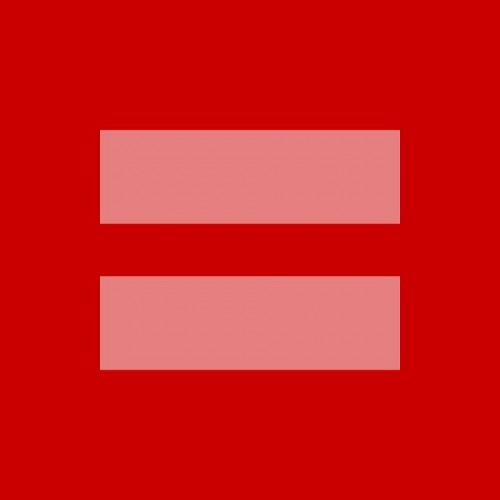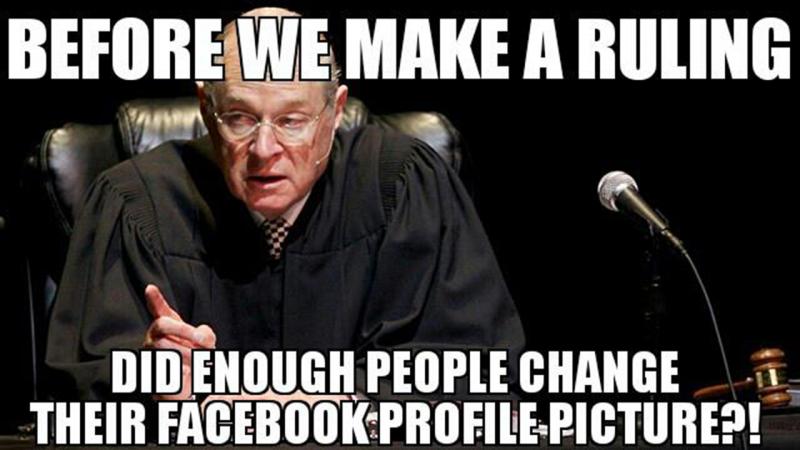“I just hope it’s true that every time someone on Facebook makes a gay equals sign their profile photo, a homophobe dies,” wrote a friend of mine on her Facebook timeline last week. She hadn’t changed her profile picture to a pink-on-red equal(ity) sign—the one that the Human Rights Campaign is now promoting alongside U.S. Supreme Court deliberations over the Defense of Marriage Act—but so many others in my feed had that her picture and comment popped up amidst a reddish sea. By this time, there were quite a few loose interpretations of the initial sign: slices of red velvet cake; Mark Rothko’s Mauve and Orange (1961); a slightly altered photo of a Robert Irwin light sculpture, and other variations abounded.
“Do pink and red really look good together?” To this question posed in 2008 by the Style Network, Lawrence Zarian, fashion guru for the Regis and Kelly Show, expressed disapproval. “It’s very pageant,” he pointed out. Style Network agreed explaining, “The eye has not been trained to accept it, so it isn’t an automatic yes.” Red and pink combined brings to mind first and foremost the kitschiness of Valentine’s Day. But the recent spin on the Human Rights Campaign logo has made the color combo suddenly more sophisticated and acceptable.
Brad Spence’s show Of Age, up now at Shoshana Wayne Gallery in Santa Monica, is a meditation on memories of kitschy colors. The hues in his acrylic-on-canvas paintings are the kind you might find in a Teen Vogue circa 1990 or in Saved by the Bell cast photos. Soft pink, hot pink, and baby blue appear most often. In the painting Baby World (2013) a diffuse blue, with bumps like zits on its surface, spreads out from the center and fades to pink as color nears the edges. In another work, Showtime (2013), transparent baby blue paint at the top fades into pink at the bottom, and a glittery gray rectangle of what look like lights around a vanity mirror overlays the color. Small samples of pinks and maroons, single strokes painted near the bottom edge of that gray rectangle recall thick smudges of lipstick on glass, as if testing or comparing shades. The smooth turquoise cylinders that spread out in four directions, superimposed over a spread of hot pink, resemble legs in bright leggings.
Previous exhibitions by Spence, an LA based artist who has shown with Shoshana Wayne since 2000, have been hazily photorealistic images of landscapes, an empty room, a picture of a group seated on folding chairs (the scene painted and based on an iPhone photo). The color palette for these works tended to be softer and quieter, colors muted as they would be if seen through a screen door. Color was something you absorbed rather than confronted, whereas the boldness of this current show’s palette means you can’t help but confront the moods the colors evoke.
There’s a story repeated in Adam Alter’s book Drunk Tank Pink about a study performed by Alexander Schauss in 1979: He asked 38 men to stare at a colored piece of cardboard for one minute and then tested their strength using a device called a dynamometer. The men who stared at blue cardboard seemed to retain their strength. The strength of men who stared at pink cardboard was temporarily depleted. Later, at a filmed-for-television event, Schauss demonstrated his study by asking Mr. California to do bicep curls, which he did effortlessly at first but could barely do at all after staring at pink cardboard. I like the idea that color could take something from you and yet, as it stands in Spence’s work where colors are mostly buoyant and bright, it still demands that you take it seriously.






